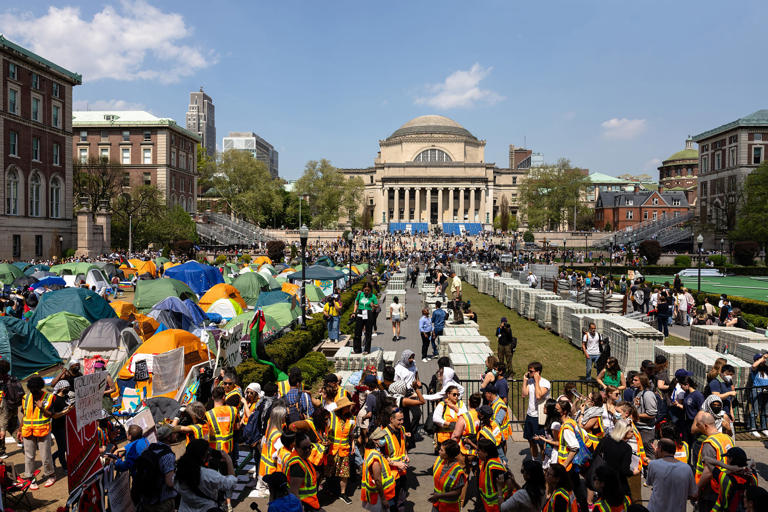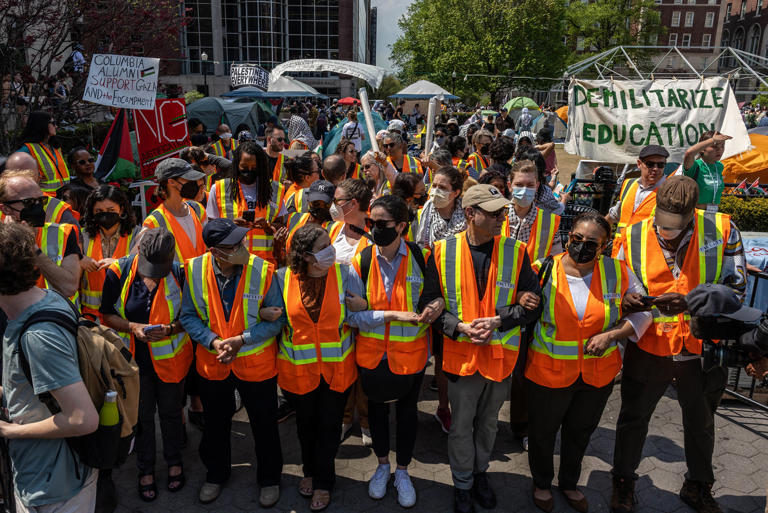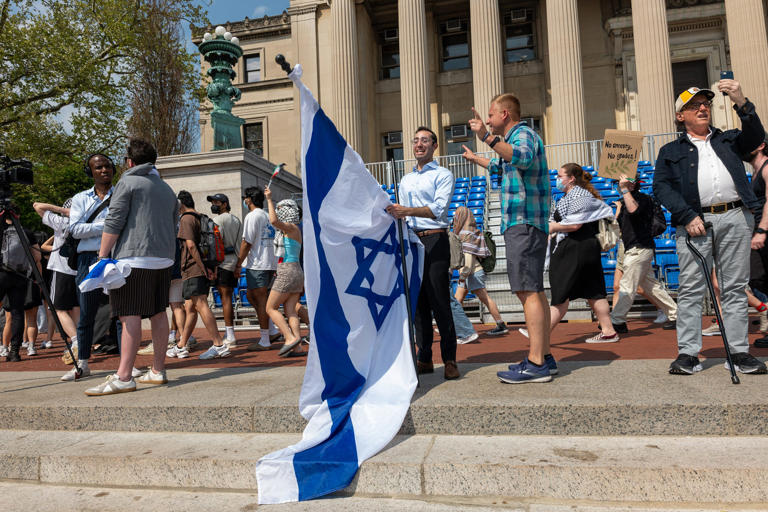“Columbia University protests, pro-Palestinian protests, student suspensions, campus activism, university divestment, Israel-Palestine conflict, academic freedom, student rights, campus safety, university policies”
“Explore the unfolding crisis at Columbia University, where pro-Palestinian protests have led to student suspensions and heightened campus tensions. This article delves into the background, the university’s response, and the broader implications of such protests on academic freedom and campus safety.”

Columbia University’s Response to Pro-Palestinian Protests
Columbia University has recently become the focal point of significant tension and controversy due to ongoing pro-Palestinian protests on campus. The university administration began suspending students who did not comply with the directive to vacate the protest encampment by the specified deadline. This article explores the events, the administration’s response, and the broader implications of these protests.
Background of the Columbia University Protests
The protests at Columbia University were primarily triggered by the demands of students for the university to divest from Israel. This is part of a larger, nationwide movement on college campuses advocating for the Palestinian cause, particularly in light of the ongoing conflict involving Israel and Hamas, which has led to significant casualties.
At Columbia, the tension escalated when the university’s president announced that the institution would not divest from Israel. This announcement was met with disappointment and frustration by the protest groups, leading to the establishment of an encampment on campus.

University’s Ultimatum and Student Suspensions
As the protest entered its second week, the university administration issued an ultimatum to the student demonstrators. They were told to vacate the encampment by 2 p.m. on a Monday or face suspension pending further investigation. The administration’s decision to potentially bar students from completing the semester underscores the severity with which they viewed the disruption caused by the protests.
Despite the warning, many students chose to remain at the encampment. Shortly after the deadline passed, the university confirmed that suspensions had begun. However, the exact number of students affected was not disclosed.
Counter-Protests and Campus Climate
The situation on campus was further complicated by counter-protests. For instance, a student openly displayed an Israeli flag at the protest site, signaling a deep division among the student body. Columbia’s President Minouche Shafik expressed concern in her statements about the protests creating an unwelcoming environment for Jewish students and faculty and becoming a noisy distraction disrupting the academic atmosphere.
Administrative Offers and Negotiations
In an attempt to address the situation, President Shafik proposed several measures. These included an expedited review of new proposals by the school’s Advisory Committee for Socially Responsible Investing and promises to make investments in health and education initiatives in Gaza. However, these offers were met with skepticism by the protesters, who viewed them as insufficient and akin to bribes.
The administration also offered to provide an alternative venue for demonstrations after the examination period, attempting to balance the right to protest with the need to maintain campus order.
Legal and Ethical Considerations
The university’s threat of suspension and possible expulsion raised significant legal and ethical questions. The administration’s actions were criticized by some as heavy-handed and in violation of the school’s own policies. Critics argued that such measures could have long-lasting effects on the students’ academic and professional futures.

Broader Impact and Ongoing Unrest
The protests at Columbia are part of a broader pattern of unrest on college campuses across the United States. Similar protests have occurred at institutions like the University of Southern California and the University of Texas at Austin, indicating a widespread and deeply felt concern among students about the Palestinian cause and the role of their institutions in geopolitical issues.
Conclusion
The situation at Columbia University highlights the complex interplay between student activism, administrative authority, and the broader geopolitical tensions that can infiltrate academic settings. It raises important questions about the limits of protest on campus, the responsibilities of educational institutions to their diverse student bodies, and the impact of global conflicts on local communities. As the university continues to navigate these challenges, the resolution of these protests will likely serve as a precedent for other institutions grappling with similar issues.
Read More-